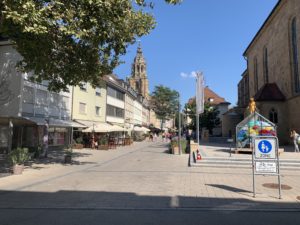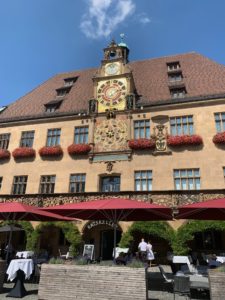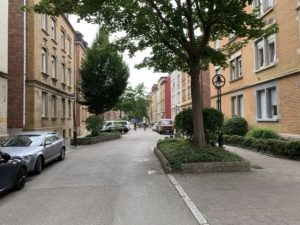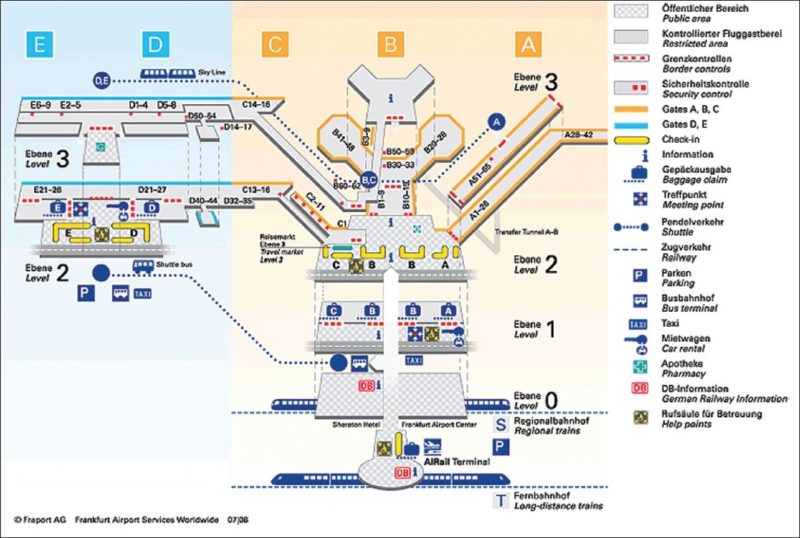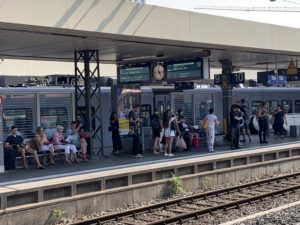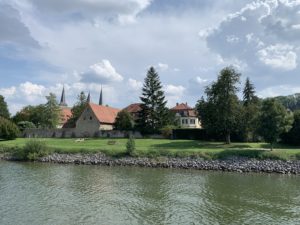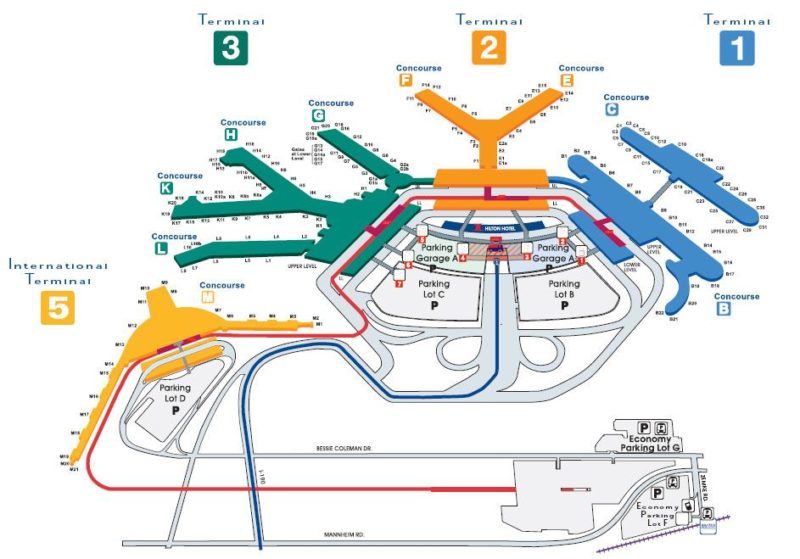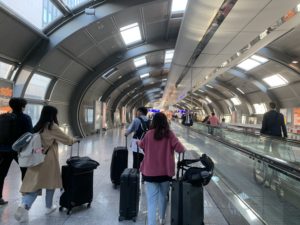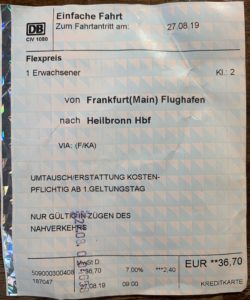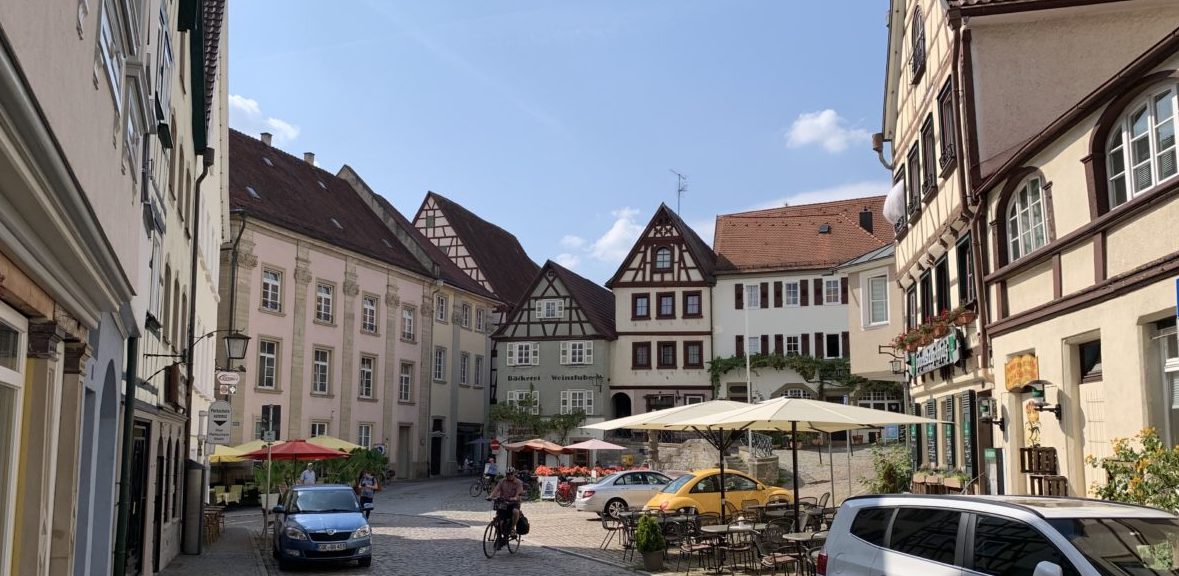
German Takeaway
September 24th, 2019 - By Patrick T. McBriarty
Three weeks ago, relief at arriving in sweet home Chicago turned to frustration and boiled over into anger. I was traveling light, without checked luggage, just a carryon, so you’d think getting home should have been easy, right? Sure, my tolerance for foolishness was not high having awakened at 6 am in Germany (11pm CST) for a 2-1/2 hour train ride and nine-hour flight to Chicago. Landing at O’Hare I was excited to be almost home – or so I thought.
My trip to Germany was to visit friends, I’ll call them John and Lena. They had moved a year ago, last-June from Kenosha, Wisconsin to the southwest German city of Heilbronn. Lena is German and immigrated to the U.S. about thirty years ago. Given her duel-citizenship returning was easy, discounting logistics, to settle with her husband back in the Baden-Württemberg area, near her family and childhood home. My friends having done well in the United States financially are now semi-retired in Germany. It seemed a dramatic change of circumstance, so I was curious to learn why Germany made sense, and was their quality of life really better?
Over a decade since I had traveled to Europe, I had forgotten the contrast in crossing borders between here and there. It really hit home after arriving back in Chicago. Leaving the gate to walk through a half-dozen long corridors of seemingly random lefts or rights to the large, low-ceiling Immigration Hall of Terminal 5, while not terrible, felt ridiculous. Poor signage and confused traffic flow entering and passing through the Immigration Hall necessitated additional airport staff to sort various herds of international travelers into appropriate lines. U.S. citizens have the privilege of passing a long, muddled line welcoming foreign travelers to Chicago for a shorter line zigzagging through a series of stanchion gates to await a free computer terminal. Upon reaching a computer, travelers scan their passport, answer four or five re-entry questions, and receive a printed receipt before continuing. Ah the joys of computerization and American efficiency. This is an apparent upgrade from the days when flight attendants handed out pre-printed Customs forms to passengers to complete in flight. I believe this is when the mantra of, “This would never happen in Germany” formed in my head. A mantra frequently repeated in running the hurry-up-and-wait gauntlet of U.S. air travel.
In planning the trip, I was initially dismayed my friends had no spare bedroom in their apartment. So for my seven days in Heilbronn via Airbnb I booked a very reasonably-priced, third-floor, one-bedroom flat three blocks from John and Lena. Apparently this is typical as for decades Lena and John paid for accommodations to visit family in Germany, while German friends and family could count on free accommodations with U.S. family and friends. Real estate in Germany is so expensive a spare room is a real extravagance. My impression was it is easier to inherit than purchase property. This explains why roughly 57% of all German households rent. Next to Switzerland, Germany has the highest percentage of renters in Europe. Historically, Germany’s high rate of rentals is a result of Allied bombing during World War II leaving post-war Germany in a housing crisis. As Lena explained most Germans consider their apartments home. Supporting this, German law heavily favors the renter making it very difficult to evict, while the opposite is true in the United States where home ownership is the norm and approximately 35% of all households rent.
Upon arriving at the Frankfurt Airport, the world’s 13th busiest airport serving 60-plus million passengers a year, a dozen or so meters from my arrival gate was a German Immigration Officer. He checked my passport, stamped it, and I was officially in Germany. There was no wait, save my halting stride to mentally grasp the possibility entry into Germany could be so easy. Clear, obvious signs and pleasant corridors funneled international travelers to the baggage claim and German Customs a short, unhurried walk from Immigration. Approaching the four Customs Officers one of them met my eye and seeing I had no checked bags waived me past her sparse luggage-check station. Without breaking stride, I passed into the airport terminal to the train and bus stations.
Back in the U.S. where we pride ourselves as world innovators, I zigzagged back and forth through a nearly empty maze of stanchion gates and queued up for an Immigration Agent. After a brief exchange he stamped my passport and I walked into what I later realized was the baggage claim area. Neither the signage nor architecture gave a clear indication of the right path through the melee of travelers, but I soon found Customs. After a short wait I handed over the computer-generated Customs form and responded to the Customs Agent’s query, “That’s right,” nodding, “I have no checked bags.” A quizzical look from the Agent followed. I smiled to assure him and was permitted into O’Hare’s Terminal 5 proper. Phew, only 50 minutes, versus 8 minutes for the same process in Germany. So this how we are making America great again! Insert mantra here… “this would never happen in Germany.”
Arriving in Frankfurt I immediately felt the more relaxed pace of life of Germany. Talking about this with John and Lena, she related a recent encounter with a Turkish man who rented an office in the same incubator building as their modest English-language school. He agonized to Lena, the high-pressure and fast-pace of Germany was too much, and confessed, he did not think he could handle it much longer. He was afraid he would have to move back home to Turkey! The three of us had a chuckle at this. And Lena’s response to the Turk was, “Hey, the pace in Germany is nothing compared to the U.S.!” Laughing, we talked further about how much easier life in Kenosha is verses Chicago, and how Germany is an even easier. Imagining ourselves in the Turk’s shoes was amusing. How much slower could life get?!
Back at O’Hare, I imagined I’d survived the worst. All I needed was to find and follow the signs for “Trains to the City” into the long underground corridors connecting the O’Hare Terminals and CTA trains. Searching around without luck, I finally asked an airport employee positioned at a barricaded up-escalator. He told me a shuttle bus was my only route. So, I walked out of Terminal 5 to confront a long line of airport passengers and assorted baggage waiting on shuttle buses. Immediately seeking to avoid this mess, I skirted the line, quickly found no alternative, yet to be certain asked one of several airport employees directing passengers into the shuttle bus line. He bought me to the final realization, Terminal 5 is not physically connected to O’Hare’s original three terminals or the underground corridors and trains to the city.
In Heilbronn we talked about productivity between the U.S. and Germany. We all thought German workers were more productive. A bit of digging later revealed this may or may not be true. The U.S. is the world’s largest economy and Germany is fifth. Productivity as measured dividing Gross Domestic Product (GDP) by country population, places the United States second and Germany fifth worldwide. However, a recent analysis in Forbes magazine showed productivity divided by the number of hours worked placed Germany slightly ahead of the United States for 2017, the most recent data available. Over the decades from the 1950s to 1990s German worker productivity was lower but grew more rapidly than the U.S. Yet, since the 1990s the growth in worker productivity in the U.S. has outpaced Germany, and it seems productivity between the two countries is close. In the dance of statistical measures and country comparisons the most revealing data point between the two is the number of hours worked per worker per year. This seemed to explain my sense life in Germany is better.
In 2017, Germans worked an average of 1,363 hours and by law all workers are guaranteed a minimum of 30-days paid leave, adding in weekends that amounts to six-weeks per year of paid vacation and personal time. I know that would make me happy! Over the same period U.S. workers averaged 1,783 hours and only 16-days, or three weeks and a day of paid leave. Traditionally,
Germans have a lower unemployment rate, less individual and governmental debt, and greater job security, which also seems to help explain my sense money and career is not the rat-race it is in the United States. Germans respect and generally follow the rules, seem to waste little time or energy seeking loopholes or attempting to game the system, and more likely to trust their government than Americans. Collectively this may explain why Germans seem happier and more efficient. The downside is Germans have fewer opportunities huge bonuses and large windfalls, given the greater regimentation and regulation of their economy and jobs than in the U.S.
I tried to imagine back in 1993 when Terminal 5 opened being a highly innovative addition to O’Hare. Its physical separation from Terminals 1, 2, & 3 (and remote airport parking) was solved via the high-tech, driver-less, fully-automated trams to convey passengers and their baggage. This elevated tram system called the “people mover” used to handle approximately 30,000 passengers each day. However, since May of 2018, it has been out of service on weekdays, and not run at all since mid-January of 2019. Thus, I was stuck waiting on the inefficient and infuriating shuttle bus system. Why??!! That was what I wanted to know. An internet search revealed the short answer was… wait for it … contractor failure and poor oversight by the City of Chicago.
The contractor was Parsons Construction who won the $310 million people mover update project, which was started five years ago. Of course, the original contract specified keeping the people mover operational throughout, but Parsons failed to meet project milestones early and often (after all it is Chicago) and both the City and contractor had failed the traveling public. A combination of contractor incompetence and bureaucratic bungling shuttered the people mover to leave an estimated 4 million in 2018 and roughly 7.5 million passengers (so far) in 2019 to use alternative means of connect between Terminals 1, 2, 3, and 5 (and long-term parking). My frustration was inflamed from affront to raw anger after navigating the seemingly unnecessarily arduous U.S. border control system to wait for this band-aid shuttle bus approach. You guessed it, insert mantra here!
At the Frankfurt Airport all terminals are physically connected and a natural flow of corridors and clear signage ties passengers to train and bus stations approximately a 100-meter walk from the main terminal. Now I should explain, I did spend 45 minutes in and around the two train stations (bahnhofs) figuring things out. I bought a ticket at a vending machine because it seemed obvious despite not yet understanding the train system. I hoped the printed ticket would provide the necessary train change, platform, and time details. It did not. However, I soon f
ound an agent and her English was sufficient to quickly print and hand me a detailed itinerary. Sure I then toggled between platforms of the regional and long-distance (ICE) train stations a couple times, studied the signage and train system maps, but did catch the right train. It was fairly easy despite my lack of German and never having used the Deutsche Bahn (German train system) before. I returned to the airport a week later on a pre-purchased ticket using DB Navigator, Deutsche Bahn’s mobile App, on my smart-phone which provided all the details and got me from Heilbronn Haufbahnhof (Main Train Station) to Manheim Haufbahnhof, successfully change trains and arrive at the Frankfurt Flughafen (Airport) Bahnhof (Train Station) in plenty of time for my flight. It was easy and my off-peak ticket cost just 26 Euros. After this I felt getting almost anywhere in German or Europe by train, tram, and bus would be very doable. Germans travel a lot, the travel market is very competitive, and once in Europe package trips are very reasonable.
Back at O’Hare I was angry that I could not simply walk to the other terminals and the CTA. All I wanted to do was catch the Blue Line from O’Hare to the Addison Stop, transfer to a CTA bus and walk the final two blocks home. The shuttle bus signs showed Terminal 1 connected with the CTA, but the airport worker said to get off at Terminal 2. Using Google maps I later determined the heart of Terminal 5 was just 1,700 feet as the crow flies from the closest gate of O’Hare’s main airport terminal, which if I had the alternative I would have happily done. Undoubtedly, masses of passengers flying like crows or simply walking across the intervening aircraft taxi-way could cause problems. So, of course my next thought was, why wasn’t Terminal 5 originally designed with an underground corridor to connect with Terminals 1, 2, & 3 and the CTA? Applying Occam’s razor was too simple for that solution was not innovative enough when Terminal 5 opened in 1993. Of course, the name itself gave it away upon realizing there is no “Terminal 4” at O’Hare Airport. Hencetofore, Terminal 5, was SO advanced they obviously had to skip a whole number to show how ludicrously innovative it was. An underground corridor connecting to the rest of the airport would have of course been ridiculous given the a shiny new people mover. Insert mantra here? Anyone, anyone?
Absorbing all this would drive anyone to drink so this is a good place to discuss the German Biergarten culture. Yes, it is a complete culture unto itself in Germany. There are so many Biergartens in Germany, imagine attempting to patronize every one of them could easily fulfill a lifetime without ever going to any of these wonderful and varied places more than once. Biergartens seem to exist in Germany because housing is expensive, living spaces are small, and Germans love gardening, nature and the outdoors. So what better way to enjoy and combine these things with German beer, food, and good comradeship? Of course, let’s all go to the Biergarten! Wikipedia, a source I use to quickly grasp a concept (though rarely the best nor the most accurate) implies Biergartens are so old no one knows who or where the first one was created. The page features the earliest known Biergarten regulation by King Maximilian I in 1812 and an idyllic drawing of a Biergarten from the 1660s. Obviously, brew masters inviting folks to join them in a beer cellar, backyard, or field to sample their products is not revolutionary, nor particularly innovative, but the Germans turned it into high-art, or rather very well-done pedestrian art, given they are accessible to everyone. And Germans walk, bicycle, motorcycle, train, and drive to Biergartens at what seems like a daily basis.
Each Be irgarten has its own unique charm featuring particular beers, local food, views, and favorite servers. Basically, in Germany if you are close to nature or a good view you will often find a Biergarten. If both are present you are either already at or about to stumble into a Biergarten. Typically, Germans do not get drunk at these places, at least not during the day or early evening where a beer or two is usually plenty. There are no TVs and people are rarely seen staring forlornly at their phones, because Biergartens are places for socializing, good conversation, and time with family and friends. So rowdy, drunken, dare I say Americans, are not usually part of the mix. They usually have a play area for kids and eight or nine months of the year German weather is neither too hot nor too cold to enjoy a Biergarten. The food and drinks are reasonably priced and usually of good quality – lots of sausages or wursts, beers (typically 4-6 choices), wine, often pizza, spätzle, and frequently salads too. As I said it is a culture, a practice and way of life I very much enjoyed during my visit.
irgarten has its own unique charm featuring particular beers, local food, views, and favorite servers. Basically, in Germany if you are close to nature or a good view you will often find a Biergarten. If both are present you are either already at or about to stumble into a Biergarten. Typically, Germans do not get drunk at these places, at least not during the day or early evening where a beer or two is usually plenty. There are no TVs and people are rarely seen staring forlornly at their phones, because Biergartens are places for socializing, good conversation, and time with family and friends. So rowdy, drunken, dare I say Americans, are not usually part of the mix. They usually have a play area for kids and eight or nine months of the year German weather is neither too hot nor too cold to enjoy a Biergarten. The food and drinks are reasonably priced and usually of good quality – lots of sausages or wursts, beers (typically 4-6 choices), wine, often pizza, spätzle, and frequently salads too. As I said it is a culture, a practice and way of life I very much enjoyed during my visit.
Back at O’Hare, I finally relented and got in line for a shuttle bus, and after three or four buses filled and pulled away adding to the airport congestion the people mover was designed to relieve, I crammed into a bus with about forty other harried souls and their luggage. As soon as I could jump off I did at Terminal 3 and was immediately happier despite the longer walk, and yes, a few more mantras of, “this would never happen in Germany,” along the way. This feeling was further aggravated upon learning the contractor wheedled the City into paying for the shuttle bus service, which costs $85,000 a day, while we wait for an upgraded people mover to be “substantially complete” by September 2019. In May of 2018 the City agreed to pay an additional $23 million for to Parsons for this “exacting” pre-holiday deadline as negotiated using independent attorneys. However, it gets better as this bungled undertaking is dwarfed by the $8.5 billion O’Hare Expansion Plan now being overseen by the very same City Department of Aviation, which shifted key personnel away from the people mover project leaving underlings to fail in managing or forestall its current demise.
Even more ironic, the centerpiece of the massive new O’Hare Expansion Plan is a Global airport facility to replace Terminal 2 featuring, get this, domestic and international departures and arrivals under one roof by 2028! Please note as best as I can tell Terminal 5 will still not be physically connected to rest of the airport, and from the City’s track record and past infrastructure projects, failed deadlines, and contract negotiations this Expansion Plan looks like a herculean-boondoggle in Chicago infrastructure. Imagine what getting this project underway will do for travelers passing through O’Hare, currently the world’s second busiest airport!
Upon learning this I was ready to completely ready to blow-up! I have long recognized America’s conceit as world-class innovators is frequently our collective Achilles heel. Especially as Europeans living in the same place, in many cases for more than two-thousand years, have figured out a lot of important lessons America insists upon ignoring. I mean if it wasn’t invented in America first… Early in my experience racing sailboats my late wife gently pointed out to me, “there is nothing wrong with following the fastest sailors around the race course.” She of course was right. Following and watching the best taught me to become better and raised my skills much more quickly than ignoring what the fastest boats and smartest sailors were doing. I find it hard to believe the same is not also true for infrastructure. Yet taking a lesson from Europeans on transportation systems or infrastructure design would mean  America might have to swallow its pride. In the current political climate of arrogance and stuffed shirts it hardly seems possible. Hey, more robust, convenient and efficient transportation systems and integrated infrastructure sound nice… Oh right, but it can’t be any good if we didn’t invent it here first. I doubt Chicago’s moniker could ever go from, “the City that works,” to, “the City that really does work!”
America might have to swallow its pride. In the current political climate of arrogance and stuffed shirts it hardly seems possible. Hey, more robust, convenient and efficient transportation systems and integrated infrastructure sound nice… Oh right, but it can’t be any good if we didn’t invent it here first. I doubt Chicago’s moniker could ever go from, “the City that works,” to, “the City that really does work!”
In a country where land is scarce and real estate expensive, Germans keep the countryside open and resist suburban sprawl by increasing density in existing villages, towns, and cities. Underutilized industrial sites in cities and towns are cleaned up and redeveloped and the forests, farms, and vineyards across the rolling hills of the bucolic countryside are protected. The advantage here is 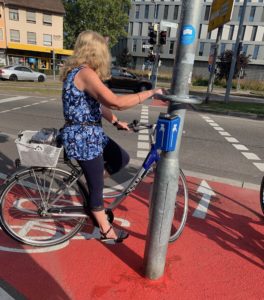 German infrastructure serves the urban centers intensively and leaves rural areas mostly unspoiled. This makes for a much prettier country in general. Certainly, there are industrial areas and Germany has more manufacturing per capita than in the U.S. At the same time the roads are fantastic and I did not see a single pothole the entire time I was there. What I did see was a lot of bikers, bike lanes, and rural mixed-use trails. Similarly, Heilbronn a city of approximately 123,000 residents offered four different public aquatic centers, all located within a three-kilometer radius and each offering unique features.
German infrastructure serves the urban centers intensively and leaves rural areas mostly unspoiled. This makes for a much prettier country in general. Certainly, there are industrial areas and Germany has more manufacturing per capita than in the U.S. At the same time the roads are fantastic and I did not see a single pothole the entire time I was there. What I did see was a lot of bikers, bike lanes, and rural mixed-use trails. Similarly, Heilbronn a city of approximately 123,000 residents offered four different public aquatic centers, all located within a three-kilometer radius and each offering unique features.
A 10-minute walk from my Airbnb was, Freibad Neckarhalde a fantastic public
pool that cost just 4 Euros a day to swim. This complex of four outdoor pools has an eight-lane, 50-meter lap pool; a splash pool for toddlers and infants; a kid’s pool; and a diving pool with four diving boards and 5-, 7.5-, and 10-meter diving platforms and is surrounded by open grassy areas for picnics, recreation, and sunbathing, multiple changerooms, and clean bathrooms. The water was not over-chlorinated and crystal clear such that underwater I could clearly see from one end of the 50-meter pool to the other. Getting in a half-dozen swims during my trip, this was the norm, not the exception known so well from Chicago’s only outdoor 50-meter swimming pool in Portage Park, which is not open to everyone throughout the day, has a much shorter season, is nowhere as clean or as new, and can hardly approach the same water quality save one- or two-days each summer.
It was interesting spending time in Germany and learn what it was like to live there. Heilbronn is not touristy and is one of Germany’s most affluent cities bolstered by a strong business environment including Audi (which has a huge assembly complex just outside of town), Bosch (similar), a large salt mine nearby where local antiquities were saved from Allied bombing during World
War II, many wineries, and more. If you are now considering immigrating to Germany I checked and there are three basic requirements: proven financial stability, your own health insurance coverage, and a basic proficiency in German. For me English was foreign enough, so this last immigration requirement would be my undoing. In any event, I look forward to returning to Germany and now view the Chicago I love with an even more jaded eye. I haven’t given up on the Windy City, but sincerely hope we could learn from our European friends and make Chicago a truly world-class city.

